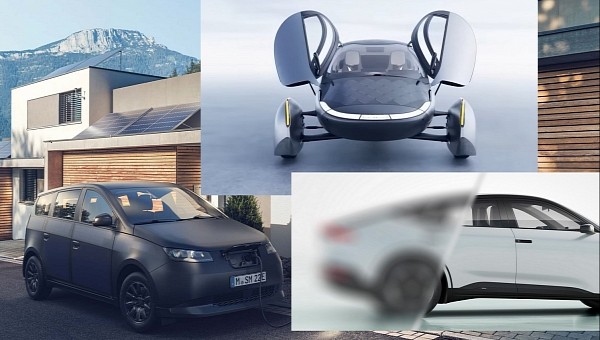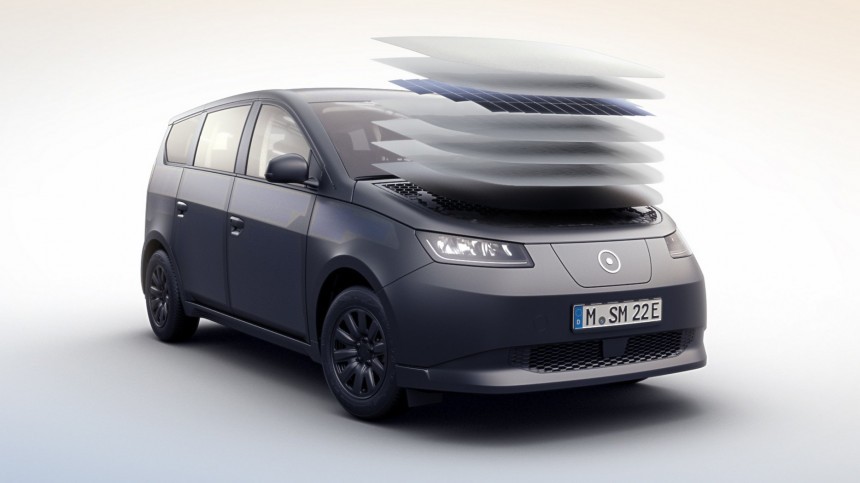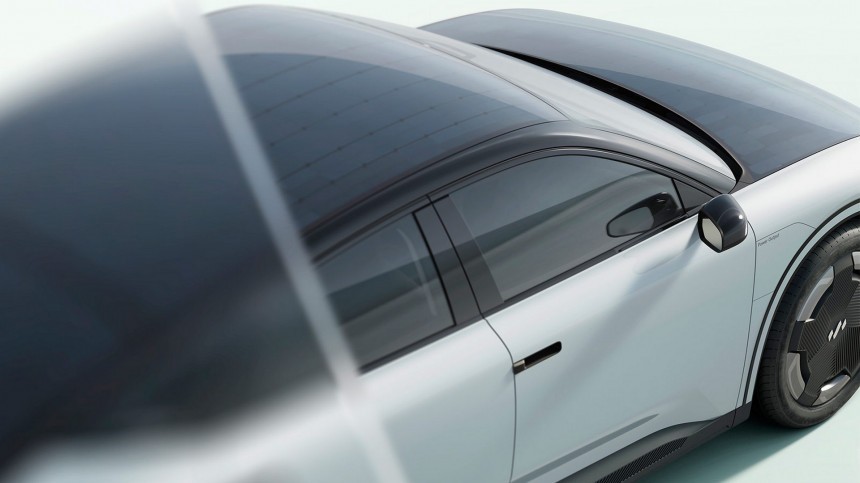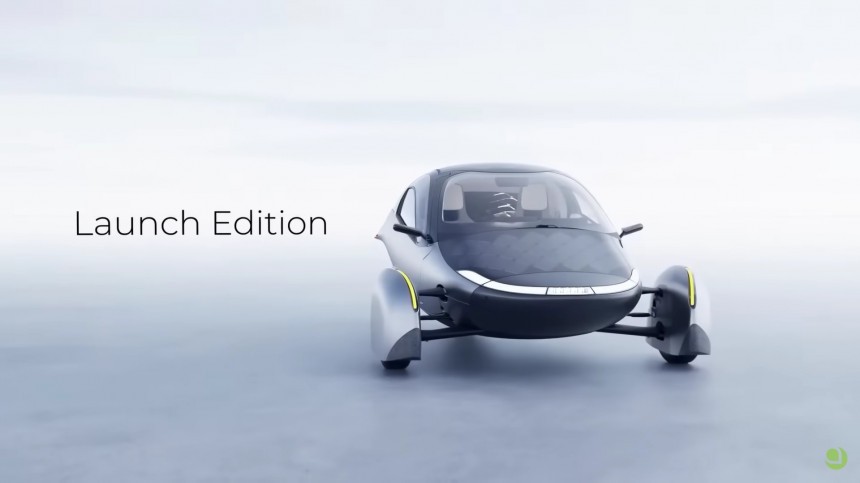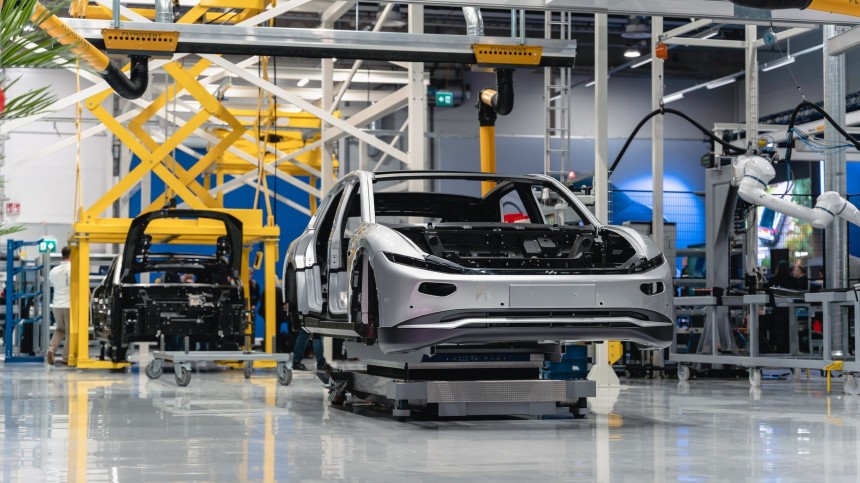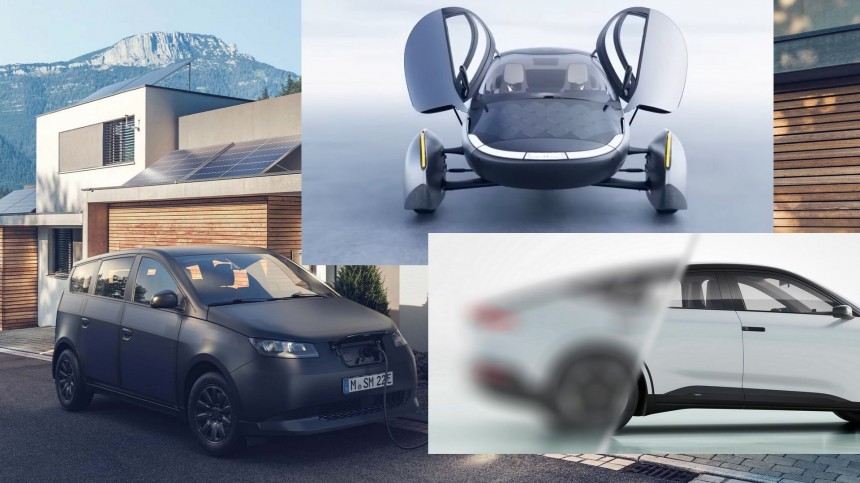Lightyear was pretty confident about the future. It traveled to CES with the Lightyear 0 and the first prototype of the Lightyear 2. Production had started in November, and it was abruptly interrupted. Sono Motors is on the same path, and even Aptera said it needs more money to put its solar trike in production lines. They are all into making solar vehicles, but what unites them the most is being startups.
Aptera is the oldest one, and it comes from knowing what it feels like to fail. The company’s first attempt to make a vehicle did not include solar cells or an electric motor. A gasoline engine would power the trike. That effort died in 2011 because the company could not raise funds to keep the project alive. When it was resurrected in 2019, the idea was to make it electric and with solar panels all over its body, which is how the Aptera Launch Edition was presented.
Lightyear and Sono Motors were already born with solar in mind. Both were fighting to be the first ones ever to sell a car powered by the energy its solar panels could generate. Until now, whenever photovoltaic cells were used in production vehicles, they only helped power ancillary systems such as air-conditioning.
All three startups were pretty sure that there was a market niche for solar vehicles. They say they have thousands of reservations, some from corporate customers. That apparently gave them the necessary confidence to try to build cars. So far, that is not going that well.
The first to announce problems was Sono Motors. The company said it did not have enough money to keep developing the Sion, its solar hatchback, and made a campaign to prove its product had enough demand to justify all the investments it had made. If the Sion managed to achieve 3,500 fully paid units in 50 days, Sono Motors would have the money to finish development and a solid argument to convince investors to join it.
That deadline was reached on January 27 with the equivalent of 1,599 cars sold. Instead of admitting its campaign did not work and postponing the project, Sono Motors extended the deadline without changing the goal. The startup probably preferred to ignore that investors could see that as a major red flag. You do not modify the rules of the game if they make you lose: you stick to the results and learn from them. Pushing to achieve its objectives regardless of the market conditions is probably what led to the second bad example from these solar startups.
Lightyear gave no signs it had no money to fulfill its plans. As I wrote earlier, it traveled to the U.S. with a production car and made a veiled presentation of the prototype that should reach mass production. The Dutch startup also set efficiency records and decided to sell its first limited-production solar car for a starting price of €250,000. It hired Valmet Automotive to make the Lightyear 0, which suggested it had the financial backup to do everything it was doing. Well, it didn’t.
Laurens Weers was the Lightyear chief financial officer (CFO) until December 1, 2022. He worked with the company for three years until raising funds with investors became too much of a burden for his private life. When bankruptcy hit, the CFO was no longer with the company. In an interview with CFO.nl, he confirmed that the Lightyear 2 would demand at least €1 billion for development and production. While he was with the company, his team managed to raise €81 million.
The idea was to eventually pursue an initial public offering (IPO) to raise the necessary money to make the Lightyear 2 without external help. The alternative would be to hire another manufacturing contractor, but that would only put the vehicle in mass production, which is pretty different from the company reaping the benefits that this process brings. Instead of directly enjoying economies of scale, Lightyear would pay someone to do that, eventually getting a discount if it ordered more cars. It is not the same thing.
When all those bad news emerged, it was Aptera’s time to state it lacked $50 million. Unlike the two other startups, it followed a clever strategy to reach its goals: it set a more extended deadline for its crowdfunding and gamified the process, making people compete to be the first ones to get an Aptera Launch Edition.
While Aptera buyers are investing more than $100,000 when the minimum bid was $10,000, the crowdfunding pace is not going as fast as it should. As revolutionary as the solar trike is, it is not easy to put money on something that you are not sure will ever hit production lines, which is a massive hindrance that all startups have. When you have a new gadget or something that does not cost you much, you may give it a try. When we’re talking about goods with price tags north of $20,000, that demands a true leap of faith.
This is why Weers was exhausted in his three-year tenure with Lightyear: he knew the company needed as much money as possible. All startups do, especially those involved with the automotive industry, a capital-intensive business. Unless you use new manufacturing methods, such as those proposed by Gordon Murray with the iStream, you are always talking about more than a billion dollars just to get started.
There are only two automotive startups that were not in a massive fight to get money: Lucid and Rivian. Lucid relies on Saudi Arabia's Public Investment Fund (PIF). Rumors that it would buy more shares recently made the company’s valuation rise. As safe as that seems to be, involvement with this controversial Middle Eastern country charges a toll on reputation, as the assassination of the journalist Jamal Ahmad Khashoggi always reminds us.
Rivian found investors that do not bring that sort of uneasiness: Amazon and Ford. Amazon even ordered 100,000 electric vans to help the startup scale up. The American startup only went public about its plans and its pickup truck when it already had a lot of money in the bank and a working prototype to present. People making reservations for the R1S and R1T were sure they would receive the vehicles, even if it took a lot of time. Despite having big plans for a new factory in Georgia and plenty of cash to build it, Rivian is struggling to meet its production and sales goals.
That demonstrates how hard it is for a startup to beat the odds even when it follows a safe strategy and is backed up by deep pockets. Not having them makes things a lot harder, especially in an industry with expensive and complex goods to sell. Adding solar panels or not to these products does not make that much of a difference when the goal is to survive, even if it makes it seem that solar cars are faded to have a rocky road ahead. That’s just a coincidence. Being a startup explains what Aptera, Lightyear, and Sono Motors are going through more accurately.
Lightyear and Sono Motors were already born with solar in mind. Both were fighting to be the first ones ever to sell a car powered by the energy its solar panels could generate. Until now, whenever photovoltaic cells were used in production vehicles, they only helped power ancillary systems such as air-conditioning.
All three startups were pretty sure that there was a market niche for solar vehicles. They say they have thousands of reservations, some from corporate customers. That apparently gave them the necessary confidence to try to build cars. So far, that is not going that well.
That deadline was reached on January 27 with the equivalent of 1,599 cars sold. Instead of admitting its campaign did not work and postponing the project, Sono Motors extended the deadline without changing the goal. The startup probably preferred to ignore that investors could see that as a major red flag. You do not modify the rules of the game if they make you lose: you stick to the results and learn from them. Pushing to achieve its objectives regardless of the market conditions is probably what led to the second bad example from these solar startups.
Laurens Weers was the Lightyear chief financial officer (CFO) until December 1, 2022. He worked with the company for three years until raising funds with investors became too much of a burden for his private life. When bankruptcy hit, the CFO was no longer with the company. In an interview with CFO.nl, he confirmed that the Lightyear 2 would demand at least €1 billion for development and production. While he was with the company, his team managed to raise €81 million.
The idea was to eventually pursue an initial public offering (IPO) to raise the necessary money to make the Lightyear 2 without external help. The alternative would be to hire another manufacturing contractor, but that would only put the vehicle in mass production, which is pretty different from the company reaping the benefits that this process brings. Instead of directly enjoying economies of scale, Lightyear would pay someone to do that, eventually getting a discount if it ordered more cars. It is not the same thing.
While Aptera buyers are investing more than $100,000 when the minimum bid was $10,000, the crowdfunding pace is not going as fast as it should. As revolutionary as the solar trike is, it is not easy to put money on something that you are not sure will ever hit production lines, which is a massive hindrance that all startups have. When you have a new gadget or something that does not cost you much, you may give it a try. When we’re talking about goods with price tags north of $20,000, that demands a true leap of faith.
There are only two automotive startups that were not in a massive fight to get money: Lucid and Rivian. Lucid relies on Saudi Arabia's Public Investment Fund (PIF). Rumors that it would buy more shares recently made the company’s valuation rise. As safe as that seems to be, involvement with this controversial Middle Eastern country charges a toll on reputation, as the assassination of the journalist Jamal Ahmad Khashoggi always reminds us.
That demonstrates how hard it is for a startup to beat the odds even when it follows a safe strategy and is backed up by deep pockets. Not having them makes things a lot harder, especially in an industry with expensive and complex goods to sell. Adding solar panels or not to these products does not make that much of a difference when the goal is to survive, even if it makes it seem that solar cars are faded to have a rocky road ahead. That’s just a coincidence. Being a startup explains what Aptera, Lightyear, and Sono Motors are going through more accurately.
